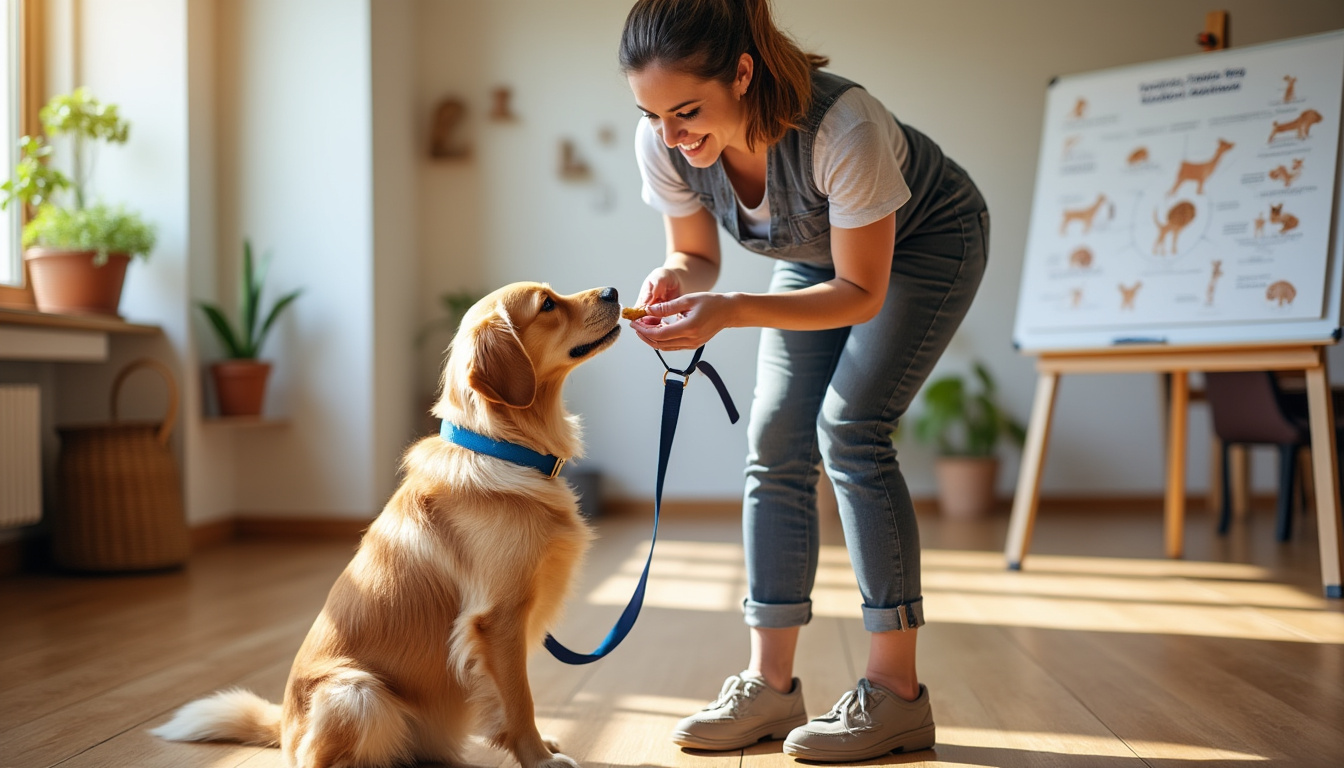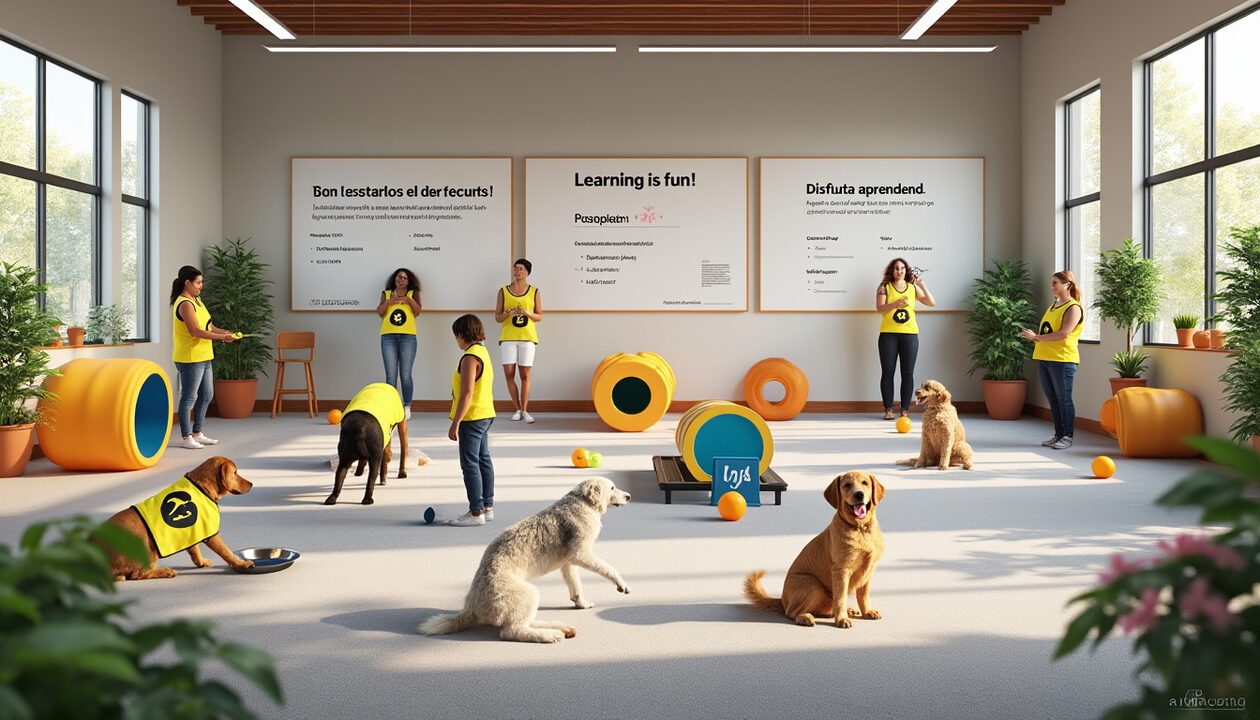What environmental factors affect canine behavior?
Understanding the environmental factors that influence canine behavior is essential for any dog owner. Every aspect of a dog’s life, from its living environment to its interactions with other animals, can shape its behavior. The environment plays a crucial role in the development of certain behaviors, whether they are positive or negative. Moreover, considering climate change and its consequences for dogs, it is urgent to question how these parameters impact animal welfare. This article examines the complex relationships between the environment, mental health, and canine behavior while highlighting the importance of appropriate education.
Understanding the environmental factors that influence behavior
Dogs, being very sensitive animals, react significantly to their environment. The surrounding elements, whether physical or social, can contribute to the formation of healthy or problematic behavior in these furry companions. How a dog integrates these factors determines its mental health and overall behavior.

The impact of the living environment on canine behavior
The setting in which a dog evolves plays a decisive role in its behavior. For example, a noisy environment, saturated with stimuli such as moving vehicles or the sounds of power tools, can generate considerable canine stress. Dogs subjected to such an environment may develop destructive or aggressive behaviors.
The climate changes and their impact on the environment must also be taken into account. Periods of excessive heat or intense cold can disrupt canine behavior, making some animals more anxious. Indeed, managing the effects of the environment on dogs is paramount to ensure their behavioral fairness.
Individuals with limited access to green spaces for walks may also suffer from a lack of mental stimulation. Dog walks, essential for their well-being, not only allow them to expend their energy but also help avoid issues of uncleanliness or aggression.
Socialization of puppies: crucial for future behavior
Encouraging good socialization from a young age is crucial to prevent behavioral problems. Puppies exposed only to a calm environment without adequate stimulation may become fearful or timid as they grow.
Early socialization with various environments, sounds, and other animals is necessary for a dog to develop positive behaviors. Participating in socialization classes or organized walks in the neighborhood helps balance their social interactions.
The relationships between canine stress and environment
Canine stress can be triggered by various environmental elements. A dog that must adapt to sudden changes, such as the arrival of a new pet, may experience significant stress. In such cases, it is important to monitor signs of distress and aggression.
It is essential to rearrange its environment to make it more soothing. Elements like anti-stress collars for dogs can also help regulate this stress. These products, combined with appropriate education, allow the dog to adapt to its surroundings.
The effects of the living environment on the mental health of dogs are also important. Obsessive behaviors, such as excessive licking, can be caused by insufficient stimulation in their environment. Mental stimulation exercises for dogs help fuel their innate curiosity.
The negative influences of climate change on canine behavior
The effects of the environment on dogs are also manifested through climate changes. The increase in temperatures, for example, can affect canine behavior. Some dogs may become more irritable, while others may hesitate to go outside, exacerbated by the fear of storms or loud noises.
It is essential to prepare dogs for these fluctuations, especially by gradually acclimating them to seasonal changes. For example, a dog that is not exposed to outdoor play sessions during the winter may find it challenging to adapt when nice weather returns.
By facilitating the integration of the dog and socializing it with humans and other animals, you provide solid foundations for balanced development. Remember regular outings and play in varied environments; this will enhance its adaptability.
Dog training and prevention of behavioral problems
Good training is essential to avoid behavioral problems. By establishing rules from the start, you provide your dog with the structure it needs to feel secure in its environment. An approach based on respect and kindness is particularly effective.

Positive reinforcement is a recommended method to encourage appropriate behaviors. By using rewards for good behaviors, you show the dog what is expected of it. This is a far more effective means than punishment, which can induce stress and anxiety.
External help can also prove beneficial. Consulting an experienced dog trainer can provide you with the necessary tools to deal with problematic behaviors. Sometimes, seeking a professional is necessary, especially if undesirable behaviors persist despite your efforts.
Fun activities for optimal canine well-being
To maintain your dog’s behavioral balance, it is essential to introduce fun activities into their daily routine. Interactive games such as puzzles can provide the necessary mental stimulation for dogs. This type of interaction is crucial to prevent boredom and destructive behaviors.
Dogs also need regular exercise to expend their energy. Participate in various activities such as agility or outdoor runs. These experiences can strengthen the bond between you and your pet while contributing to its overall flourishing.
Managing the environment and improving behavior
Arranging the immediate environment can greatly influence canine behavior. Creating a safe living space, enriched with interactive toys, can limit undesirable behaviors. A well-organized space helps to alleviate anxiety and prevent destructive behaviors.
During walks, choose appropriate locations and regularly change routes to expose your dog to various stimuli. This way, you will soften its reactions to stressful stimuli while developing its sociability.
When to consult a professional?
In the face of persistent behaviors despite your efforts, consulting a veterinarian or a behaviorist may prove necessary. These specialists can diagnose underlying causes, whether it’s a health problem or a welfare issue.
Reacting quickly to a behavioral change is essential to prevent more serious inconveniences. Signs of pain or discomfort should never be overlooked. By carefully observing your animal, you will be able to detect signs of malaise quickly, allowing for timely intervention.
Identifying whether the change in behavior is due to an environmental or health factor is complex, which is why it is important to seek professional help. They will ensure that your dog receives the necessary support to regain balanced behavior.
Preventing behavioral problems in advance
To ensure that your dog remains healthy, preventive measures can help avoid undesirable behaviors. Offering early education, socializing the puppy at a young age, and exposing it to various environments contribute to providing the best foundations.
Establishing a daily routine also helps reduce stress. Stability is key for your companion to feel comfortable in its living environment and evolve serenely.
| Canine Behaviors | Potential Causes | Solutions |
|---|---|---|
| Aggression | Fear, stress, territory | Early socialization, training |
| Destruction | Boredom, lack of exercise | Fun activities, walks |
| Excessive barking | Attention, anxiety | Positive education, enrichment |
| Incontinence | Stress, health issue | Veterinary visit, educational routine |
A balanced environment, enriched with fun activities and adapted education, offers an improved quality of life for your four-legged companion. Interactions with other dogs, games, and puppy socialization are all elements to consider carefully. By being proactive, you can help your dog develop balanced and positive behavior in a constantly changing world. Think of products like Purina dog products, which contribute to your pet’s health and happiness.




